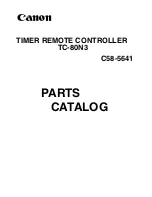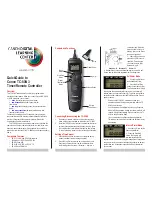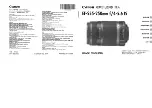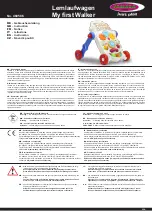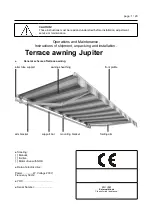
32
TK 61555-2-MM-EN
14. Turn the unit on and allow it to start. Using the clamp-on ammeter, check the current flow in
the 2A wire.
•
A positive reading indicates the alternator is charging. On unit startup, the current flow
should momentarily increase to allow for battery current used during preheat and
cranking. Within a short time the current should fall to normal unit load plus charge
current to the unit battery (typically 5-10 amps).
•
A reading on the clamp-on ammeter at or near 0 amps indicates the alternator is not
charging. Checking the unit ammeter will show a discharge condition. The alternator is
defective if there are no problems in the wiring. Recheck the wiring before assuming the
alternator is defective.
15. Check the voltage at the B+ terminal. The voltage should increase until it reaches the
anticipated voltage regulator setting as shown in the table below. Record the voltage.
•
The voltage regulator setting varies inversely with the temperature as shown in the table
below. Regulator voltage can vary from approximately 15.2 Vdc at -40 C (-40 F) to
approximately 13.2 Vdc at 80 C (176 F).
Tempera-
ture
Anticipated Regulator
Voltage
-40 C (-40 F)
From 15.2 Vdc to 14.0 Vdc
25 C (77 F)
From 14.4 Vdc to 13.6 Vdc
80 C (176 F)
From 14.2 Vdc to 13.2 Vdc
•
If the voltage does not increase to the anticipated voltage regulator setting, the alternator
is defective if there are no problems in the wiring. Recheck the wiring before replacing the
alternator.
16. If the voltage does increase until it reaches the anticipated voltage regulator setting, compare
the voltage at the B+ terminal to the voltage between the battery terminals. The voltage at the
B+ terminal should be no more than 1.0 Vdc higher than the voltage between the battery
terminals.
a.
If the voltage at the B+ terminal is no more than 1.0 Vdc higher than the voltage between
the battery terminals, continue with Step 17.
b.
If the voltage at the B+ (POS) terminal is more than 1.0 Vdc higher than the voltage
between the battery terminals, clean and check the wires and connections in the 2A and 2
circuits and repeat this check.
17. Increase the charging system load as much as possible by running the unit in high speed
heat.
18. Monitor the alternator output voltage.
a.
With the increased load, the alternator output voltage should decrease no more than 0.5
Vdc. The voltage may increase as much as 1.0 Vdc. If the alternator output voltage
decreases no more than 0.5 Vdc the alternator is good.
b.
If the alternator output voltage decreases more than 0.5 Vdc, the alternator is defective if
there are no problems in the wiring. Recheck the wiring before replacing the alternator.
19. A
Alltte
errn
na
atto
orr D
Diio
od
de
e Q
Qu
uiicckk C
Ch
he
ecckk::
N
No
otte
e:: This check confirms proper diode function.
a.
With the unit still running, set the digital multi-meter connected from the alternator B+
output to chassis ground for AC volts. No more than 1.0 Vac should be present. A reading
of more than 1.0 Vac indicates damaged alternator diodes.
20. Turn the unit off.
Field Current Test
Use this test to determine if the alternator can be repaired. Perform this test with the unit turned
off.

































